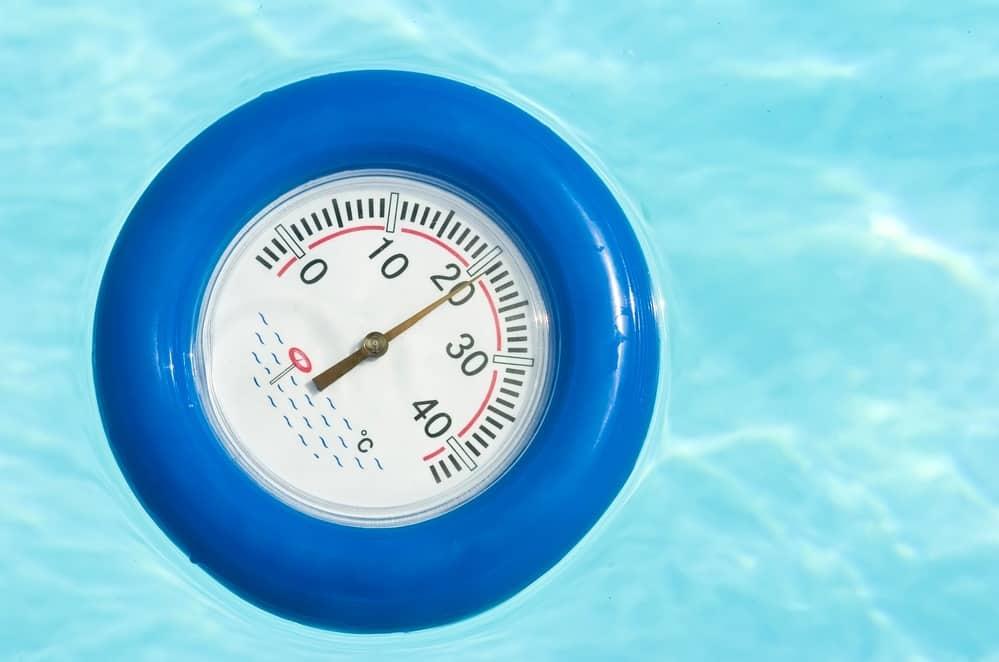According to the World Health Organization, water temperatures ranging from 78 to 86 degrees Fahrenheit are generally comfortable and safe for those engaging in moderate physical activity in a pool.
But health concerns come in with either extreme—too hot or too cold—and when it comes to health concerns related to pool temperature, risk is related to personal health and the type of activity.
It's recommended that all people approach extreme water temperatures, in both pool and open water, with caution.
Hot water can cause a rapid decrease in blood pressure, which can lead to dizziness or loss of consciousness. That's why it’s recommended that hot tubs be kept below 104 degrees Fahrenheit and why competition pools and recreational pools have different temperature guidelines.
The more strenuous the water activity, the more important it is for the water to not be too warm.
"High aerobic activity in high temperature water can be dangerous," according to the United States Water Fitness Association.
Conversely, swimming in temperatures below 70 degrees Fahrenheit can lead to increased heart rate and blood pressure. Risk, particularly for cardiac arrest, continues to increase in water under 64 degrees Fahrenheit, which is why many regulatory bodies require wetsuits when these conditions apply to an open water competition.
"When temperatures go below 70 degrees, healthy individuals will experience muscle spasms and often wear wetsuits to preserve their body temperature," says Stephen Soloway, a New Jersey-based doctor who specializes in rheumatology.

In general, swimmers should be wary of exposing themselves to temperature extremes for long periods of time. This is especially true for pregnant women, those with medical problems, and young children.
But what about the spectrum of temperatures in between? It depends on what you’re doing, and what the air temperature feels like around you.
U.S. Masters Swimming’s rule book dictates that pools used for competition should be between 77 and 82 degrees Fahrenheit and that open water competitions can’t occur in a body of water less than 60.8 degrees Fahrenheit unless there are special precautions. If an open water race is less than 5 kilometers, the water cannot begin if the temperature exceeds 87.8 degrees Fahrenheit, and if the race is 5 kilometers or longer, the temperature cannot be more than 85 degrees Fahrenheit.
That temperature aims to prevent dehydration, overheating, muscle cramps, heat exhaustion, and other health concerns.
Most multi-purpose pools incorporating lap, recreational, and water fitness swimmers across the country are typically kept at a higher temperature, between 83 and 86 degrees, though some programs will bring temperatures up to 90 degrees for small children.
Soloway says that the importance of staying hydrated increases when pool temperatures exceed 80 degrees, especially for those with heart issues.
"In a system with less fluid, the heart has to pump faster to maintain a healthy blood pressure," he says, "Somebody with a heart problem such as heart failure or rhythm issues such as atrial fibrillation, the last thing that you'd want to do is increase their pulse. This elevated pressure may cause permanent heart damage."
It's unlikely that the temperature of a pool will please everyone, even when it falls into appropriate ranges.
If you exercise in a warmer pool be sure to drink lots of water, swim for shorter durations, and make sure that a lifeguard or aquatic center staff is present.
If you exercise in a cooler pool and are bothered by the temperature, try wearing a silicon cap and ear plugs to retain some heat, or try some sort of thermal swimwear. If your activity in the pool is fairly rigorous and you still feel too cold, there could be an extraneous central nervous system or hormonal issue, Soloway says, and you can consult with a doctor if you’re concerned about your cold tolerance.









